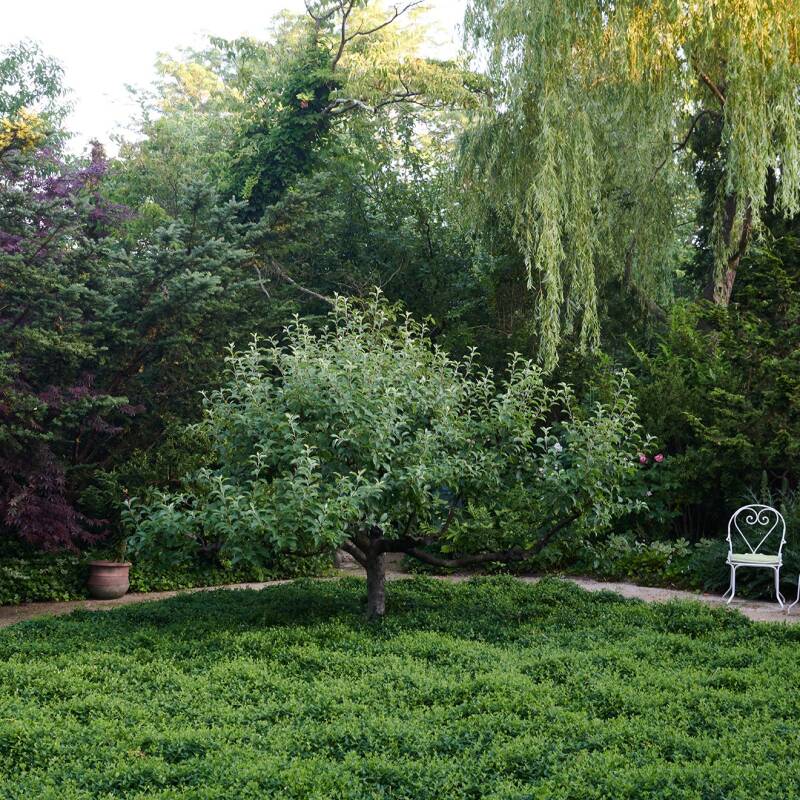Rozae Nichols made a name for herself in the fashion industry designing smart, pattern-happy pieces for her label Clover Canyon. She showed at New York Fashion Week and counted discriminating celebrities like Solange Knowles and Olivia Wilde as fans. But then in 2016, she decided to shutter the brand. For those paying attention, there were hints as to what she was planning for her next act: her spring 2016 collection, vibrant with flower motifs, was “a ‘celebration of the mightiness’ of [weeds] and their knack for ‘breaking their way through cracks in cement,’ ” she told Vogue.
The following year, she found inspiration for her next project in Los Angeles’ Mid-City, a diverse neighborhood that is, as its name suggests, in the middle of the city. In the neglected yard of a commercial building, Rozae set about creating a beautiful and productive urban garden—and in the process, she also discovered she had more to offer in fashion. But this time, her new venture, Flora Animalia, would combine her love for fashion with her passion for gardening.
Flora Animalia specializes in chic unisex gardening clothing and is as understated as Clover Canyon’s pieces were bold. (The throughline? Both brands have strong points of view, but whereas Clover Canyon trafficked in elevated patterns, Flora Animalia makes a statement via striking silhouettes.) Today, Flora Animalia’s studio and garden is an oasis in the urban landscape. “We are a very small team of six, and we spend our time together both inside the creative space and outside in the garden. We make all of our small batch production here in studio. We do not have a store per se, but some of our clients come over to visit during our open-door Friday afternoons,” Rozae tells us.
Cultivating a connection with community and giving back is important to her: a portion of the company’s proceeds goes to Mercy For Animals and The Sea Shepherd, and they offer free workshops to people interested in growing their own edible gardens or starting a plant-based diet. But even those with no intention of doing either may find themselves drawn to Rozae’s inspired space: Dominated by cement sewer pipes repurposed as planters, the garden she has created is as considered and chic as the clothing and wares she designs for Flora Animalia.
“These planters will last for decades and hopefully always contain earth and plants, and provide a delightfully functional, sculptural elegance,” she says. Below, she explains how the urban sanctuary came to be.
Photography courtesy of Flora Animalia.
Before





After







For more gravel gardens we admire, see:
- Going Over to Gravel: Designer and Author Carolyn Dunster’s Lawn-Free Garden
- Before & After: An Artful Gravel Garden in Sonoma, California
- The New Gravel Backyard: 10 Inspiring Landscape Designs
And be sure to check out:
To learn how to make your own concrete planters, head over to Bob Vila.














Have a Question or Comment About This Post?
Join the conversation (0)